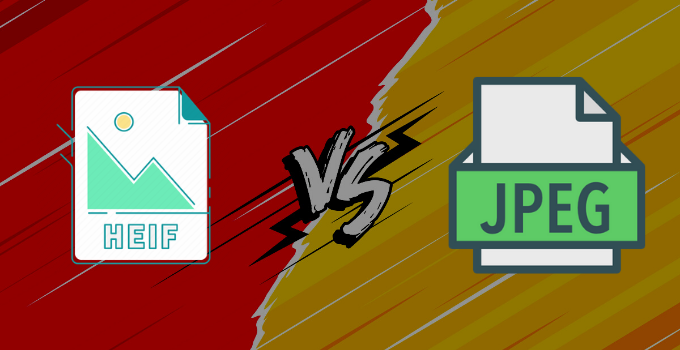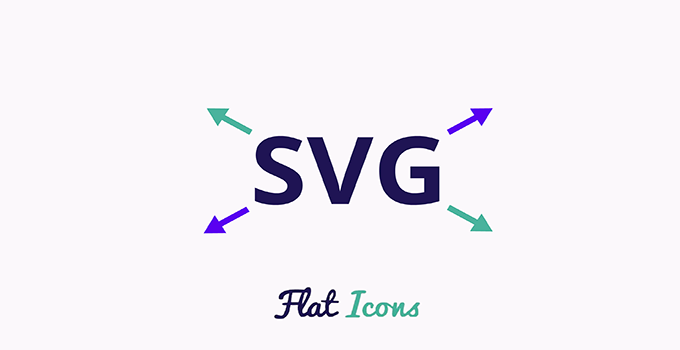Image quality, storage space, and image format preferences have been the topic of debate of photo and camera enthusiasts since forever. One of the most impressive file formats that’s been developed in recent years is the infamous High-Efficiency Image File Format aka HEIF.
Apple announced the shift from JPEG to HEIF in WWDC 2017. They said they were switching formats for image capture across all their products lineup.
Since then, some of the tech and camera giants, like Canon and few other brands, have embraced HEIF.
Slowly but surely, HEIF is gaining traction due to its compression capabilities, its ability to match and its presumed ability to exceed the quality of JPEG in less space. This means you’ll be able to store more photos in less storage space, with potentially better quality as well.
Sounds pretty good, right?
What is HEIF?
High Efficiency Image File Format (HEIF) is a file format that makes use of a modern compression algorithm that’s able to store images in smaller sizes – while still keeping that crystal clear, high definition image quality. HEIF uses a different efficient image compression algorithm compared to its predecessor H.264, which makes the file size smaller while retaining the same or better image quality.
HEIF being a container rather than a file extension is also much more flexible than JPEG due to it producing either a single image or image sequences.
Non-Destructive capabilities of HEIF is why the iPhone maker made the shift to HEIF to support Live Photos & pro-level image editing on their devices.
Apart from the smaller file size HEIF produces compared to JPEG/JPG, the HEIF format offers other features like transparency and 16-bit color vs JPEG’s meager 8-bit color. This means that it can capture all of the extended color ranges provided by the camera’s 10-bit or 12-bit color output. Neat ain’t it?
HEIF is also great for simple non-destructive editing like mentioned above. You can easily modify your photos and images by adding enhancements like layers on the foreground, middle ground, and background.
You can go ahead by rotating or crop a HEIF image, without changing or saving them for a second time. This means that it’ll be faster for people who are into image editing and working on macOS or iOS devices.
Is HEIC & HEIF the same?
You might’ve heard of the file type called HEIC (High Efficiency Image Container) being used interchangeably with HEIF files. So what’s the difference then? Well… there isn’t one.
HEIC is simply the file format name that Apple has chosen for HEIF files. If you didn’t know – HEIC isn’t an Apple invention at all but was developed by the MPEG group. They were also the creators of AAC and few other popular codecs used widely.
Pros & Cons of HEIF or HEIC
Pros
- Occupies less storage space compared to JPEG and can produce high quality images
- Can help software that uses Non-Destructive image editing
- Supports up to 16-bit color scheme, while JPEG offers 8-bit
- Proprietary features like Live Photos are possible because of HEIF
Cons
- Lacks compatibility with various platforms and devices
- Currently not supported by Google Chrome and most popular web browsers or social media platforms like Facebook or Instagram.
- Patent of HEIF format, which affects Apple and other brands that use and distribute it. That means no open-source.
What is JPEG or JPG?
If you’ve ever uploaded or downloaded images from the Internet or edited photos on any image editing tool or software, you would’ve noticed the file format JPEG or JPG.
A standard or baseline JPEG file is one of the most popular and oldest image formats used since 1992.
People often confuse between JPEG or JPG, thinking they are different and deciding which one offers the best quality or smaller size…
Well, there is no difference between the two except the number of characters. Back in the day, Windows had a 3 character limit to file extensions like .jpg, unlike Mac or Linux. These days, however, Windows started supporting 4-character file extensions such as .jpeg.
And the character limit is the reason why we .JPG instead of .JPEG. The .JPG is just a shortened file extension of .JPEG. There is no difference at all, We have explained more about JPEG, and it’s compression algorithm in one of our previous blog posts if you’d like to check that out.
Pros & Cons of JPEG?
Pros
- It can adjust the degree of compression of a particular digital image, which means you’ll be able to find the right trade-off between image quality and image size
- Widely supported compared to HEIF/HEVC
Cons
- Takes more storage space compared to newer image file formats considering there’s no quality compression going on
- The output of JPEG is not always Progressive, which is better than Standard
HEIF vs JPEG – Which image file format has better quality?

Image Quality – HEIC vs JPEG
When it comes to image quality, HEIF seems to be the winner! HEIF has more overall depth than JPEG. HDR captures that uses 10-bit or potentially 12-bit color depth can utilize HEIF better.
Compatibility
Wikipedia states that as of May 2020, there’s no native browser support for HEIF. Facebook does support the upload of HEIC, but converts it to JPEG or WEBP.
Compatibility is one of the major downsides of HEIF. It isn’t widely compatible as JPG is, which has been around for more than 20 years.
The HEIF photo format is available for iOS 11 (and later) as well as macOS High Sierra (and later). You can view the photo format saved in your iPhone by navigating to Settings > Camera > Formats.
You would need to make use of a HEIC extension from the official Microsoft store to view the images assuming you don’t own a Mac or iOS Device.
Image Compression
After 25 years, JPEG has finally shown it’s limitations with its 8-bit format and high compression levels that produce a significant reduction in image quality.
It is claimed that HEIF can handle two to one increase in compression compared to JPEG, while still keeping similar or better quality.
Conclusion
As we can see from the info throughout this post – HEIF is the superior file format. Apart from compatibility issues – the file size, quality, compression, and the higher color depth support open up a whole new world of amazing image quality.
Is HEIC better quality than JPEG?
Yes HEIC or HEIF is better than JPEG or JPG. HEIC/HEIF provides better compression while retaining better or similar quality when compared with JPEG.
How do I convert HEIF to JPG?
Most modern software or devices supports native HEIF to JPG conversion. For e.g: You can export to JPG from an iOS device on Windows PCs. Alternatively, you can use online conversion tools to convert HEIF to JPG.
What does HEIF image mean?
The full form of HEIF is High Efficiency Image File Format.
Should I use high efficiency or most compatible?
High efficiency takes advantage of HEIF/HEIC giving you the best or similar image quality at a smaller size when compared to JPG which is the default image format when you select “most compatible”.










